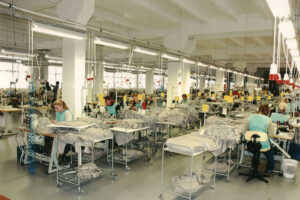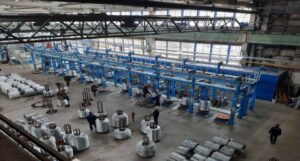
According to Serbian Economist, Swiss trader Gunvor has declined an offer to purchase Lukoil’s international assets after the US Treasury Department stated that it would not approve the deal and called the company a “puppet of the Kremlin.” This was reported by Reuters, the Financial Times, and AP.
In early 2025, Lukoil announced that it had accepted Gunvor’s offer to acquire Lukoil International GmbH, subject to obtaining approvals, including an OFAC license. Following the US Treasury Department’s statement, Gunvor withdrew its offer.
The US agency made it clear that the license would not be issued until Russia ended its war against Ukraine. Gunvor rejected the accusations, stating that it had distanced itself from Russian operations and severed ties with Gennady Timchenko in 2014, but confirmed its withdrawal from the deal.
According to media reports, the asset portfolio discussed in the deal was valued at $20-22 billion and included refineries and distribution networks in Europe, as well as stakes in projects abroad.
Gunvor’s refusal increases uncertainty surrounding the future of Lukoil’s foreign assets amid US sanctions coming into force on November 21.
The media lists the following countries as part of the Lukoil asset package that was discussed in the failed deal with Gunvor:
Source: https://t.me/relocationrs/1707

Apartment prices in Serbia in the second quarter of 2025 were 5.78% higher than a year earlier; compared to the first quarter, the increase was 1.36%, according to the statistics agency. In the old housing stock, annual growth reached 5.89%, and in new buildings, 5.57%.
According to Eurostat data for the same period, the average growth in housing prices in the EU was 5.4% year-on-year, with significant variations: from a decline of 1.33% in Finland to growth of 17.23% in Portugal, 15.51% in Bulgaria, and 15.12% in Hungary.
The main trends in the real estate market in Serbia at the moment are as follows:
1) The balance of demand is shifting in favor of fully finished apartments and energy-efficient new buildings in large agglomerations, primarily in Belgrade and Novi Sad.
2) The price gap between new buildings and secondary housing remains significant, but the rates of increase are similar — 5.57% versus 5.89% year-on-year, indicating broad demand support for both segments.
3) The external background is neutral-positive: Serbian dynamics are close to the European average, but without the overheating characteristic of a number of EU markets.
Vera Yegorova-Tolsta, director of the Vidovstan real estate agency (Belgrade), commented on the market situation for Serbian Economist:
“We see sustained interest in well-located properties with clear operating economics — these are new business-class buildings and liquid secondary properties with reasonable utility costs. Buyers have become more careful in comparing options in terms of energy efficiency and management infrastructure, which supports quality projects even at a higher price per square meter. In Belgrade, offers that meet these criteria continue to sell quickly, thanks to local demand and buyers moving from other cities.”
Given the current trajectory of interest rates and household incomes, the baseline scenario is moderate price growth within the limits of inflation plus a premium for location and energy efficiency.
Risk factors for prices include a slowdown in mortgage lending and rising developer costs; support factors include limited supply in prime locations and a moderate influx of internal migrants to the Belgrade agglomeration.

The Naftogaz Group and Greek company ATLANTIC-SEE LNG TRADE S.A. have signed a memorandum of cooperation with the aim of diversifying liquefied natural gas (LNG) supply routes to Ukraine, according to Sergey Koretsky, CEO of Naftogaz of Ukraine.
“On the sidelines of P-TEC, we signed a memorandum with the Greek company ATLANTIC-SEE LNG TRADE S.A. It concerns future regular supplies of American gas to Ukraine via Greek gas terminals and the Vertical Corridor,” Koretsky wrote on Facebook on Friday.
The long-term partnership is set to last until 2050 and will allow for the gradual implementation of new strategic projects.
He mentioned ensuring stable long-term LNG supplies for Ukraine, integrating Ukrainian infrastructure into LNG logistics routes to Europe, and creating a sustainable system for the supply and storage of American LNG.
“We are laying a new foundation for transatlantic cooperation with our partners. This is another step towards long-term energy stability for Ukraine and new opportunities,” commented the head of Naftogaz.
As reported, on the same day at P-TEC, Naftogaz Group agreed with Poland’s ORLEN and American partners on new supplies of American LNG to Ukraine in the amount of at least 300 million cubic meters for a stable heating season.
As of October 1, Ukraine had already received 400 million cubic meters of American LNG.

Translum LLC (Mukachevo, Zakarpattia region) became the owner of more than 98.87% of the shares of Mukachevo Knitwear Factory “Mriya” JSC, previously owned by Utenos Trikotazas JSC (Utenos Trikotazas, Lithuania).
According to information in the disclosure system of the National Securities and Stock Market Commission (NSSMC), the relevant purchase and sale agreement was signed by the parties on October 24 of this year.
According to YouControl, Translum LLC was registered on July 23 of this year with a registered capital of UAH 5 million, specializing in the production of knitwear and knitted clothing. The owner and ultimate beneficiary is local entrepreneur Vladislav Vitvinov.
Mukachevo Knitting Factory Mriya, a knitwear manufacturer founded in 1973, has been a subsidiary of Utenos Trikotažas since 2005.
The main supplier of raw materials and buyer of finished products is Utenos Trikotazas, which owned 98.95% of the factory’s shares.
According to the company’s financial report to the National Securities and Stock Market Commission, in 2024 it incurred a loss of UAH 7.4 million (46.6% less than in 2023) with a 15% reduction in net income to UAH 20 million.
As of the beginning of this year, the factory employed 84 people (compared to 113 a year earlier).
The authorized capital of JSC Mukachevo Knitting Factory Mriya is UAH 5.13 million, with a share par value of UAH 0.1.
In 2024, PJSC Tovkach Mining and Processing Plant (TGZK, Pershotravneve, Zhytomyr region) received a net profit of UAH 1.260 million, compared to a loss of UAH 794,000 in 2023.
According to the annual report, TGZK’s net income in 2024 decreased by 50.7% compared to the previous year, to UAH 91.104 million.
Undistributed profit at the end of 2024 amounted to UAH 456.710 million.
As reported, TGZK received a profit of UAH 78 million 175,767 thousand in 2020, UAH 44 million 223,637 thousand in 2021, and UAH 14 million 659,029 thousand in 2022. The company ended 2023 with a net loss of UAH 794,133 thousand.
TGZK is a company engaged in the extraction, processing, and enrichment of quartzite. It is the main supplier of raw materials for the production of ferroalloys, refractories, and dinas in Ukraine.
TGZK is developing the Tovkachivska section of the Ovruch quartzite deposit in the town of Pershotravneve using open-pit mining methods.
According to the NDU data for the first quarter of 2025, Navaro Development Limited owns 5.1898% of the shares of the private joint-stock company, Lucrino Investments Limited owns 9%, Mantara Holdings Limited owns 72.0629%, and Duxton Holdings Limited (all based in Cyprus) owns 12.1891%.
The company’s authorized capital is UAH 1.6 million, and the nominal value of a share is UAH 2.25.

Dniprometiz-TAS LLC (Dnipro), owned by Ukrainian businessman Serhiy Tihipko, reduced its net profit by 2.9% compared to the same period last year, to UAH 11.727 million, according to the results for January-September of this year.
According to the company’s interim report, net income for the period increased by 7.5% to UAH 2 billion 607.402 million.
At the same time, the company’s undistributed profit at the end of September amounted to UAH 274.763 million.
As reported, in 2024, Dniprometiz-TAS increased its net profit by 47.7% compared to 2023, to UAH 14.197 million from UAH 9.610 million, while net income increased by 22.7%, to UAH 3 billion 285.688 million. At the same time, the company’s undistributed profit at the end of 2024 amounted to UAH 263.048 million.
According to the results of 2023, Dniprometiz reduced its net profit by 2.6 times compared to 2022, to UAH 9.658 million from UAH 24.733 million. Over the past year, net income increased by 8.2% to UAH 2 billion 677.836 million.
Dniprometiz reduced its net profit sixfold in 2022 compared to the previous year, to UAH 25.572 million, while net income increased by 1.1% to UAH 2 billion 474.397 million.
Dniprometiz-TAS manufactures metal products from low-carbon steels. The company’s capacity is 120,000 tons of products per year.
T.A.S. Overseas Investments Limited (Cyprus) owns a 98.6578% stake in Dniprometiz LLC.
The authorized capital of Dniprometiz-TAS LLC is UAH 83.480 million.